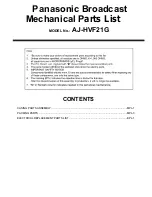
MC45 Hardware Interface Description
P R E L I M I N A R Y
MC45_HD_01_V00.02a
Page 28 of 90
12.08.2002
3.2.3.1 Battery pack characteristics
The charging algorithm has been optimized for a Li-Ion battery pack that meets the
characteristics listed below. It is recommended that the battery pack you want to integrate
into your MC45 application is compliant with these specifications. This ensures reliable
operation, proper charging and, particularly, allows you to monitor the battery capacity using
the AT^SBC command (see [1] for details). Failure to comply with these specifications might
cause AT^SBC to deliver incorrect battery capacity values. A battery pack especially
designed to operate with MC45 modules is specified in Chapter 3.2.3.2.
·
Li-Ion battery pack specified for a maximum charging voltage of 4.2 V and a capacity of
800 mAh. Battery packs with a capacity down to 600 mAh or more than 800 mAh are
allowed, too.
·
Since charging and discharging largely depend on the battery temperature, the battery
pack should include an NTC resistor. If the NTC is not inside the battery it must be in
thermal contact with the battery. The NTC resistor must be connected between
BATT_TEMP and GND. Required NTC characteristics are:
10 k
Ω
+5% @ 25°C, B
25/85
=
3435K +3%
(alternatively acceptable:
10 k
Ω
+2% @ 25°C, B
25/50
= 3370K +3%)
. Please
note that the NTC is indispensable for proper charging, i.e. the charging process will not
start if no NTC is present.
·
Ensure that the pack incorporates a protection circuit capable of detecting overvoltage
(protection against overcharging), undervoltage (protection against deep discharging)
and overcurrent. The circuit must be insensitive to pulsed current.
·
On the MC45 module, a built-in measuring circuit constantly monitors the supply voltage.
In the event of undervoltage, it causes MC45 to power down. Undervoltage thresholds
are specific to the battery pack and must be evaluated for the intended model. When you
evaluate undervoltage thresholds, consider both the current consumption of MC45 and of
the application circuit.
·
The internal resistance of the battery and the protection should be as low as possible. It
is recommended not to exceed 150m
Ω
, even in extreme conditions at low temperature.
The battery cell must be insensitive to rupture, fire and gasing under extreme conditions
of temperature and charging (voltage, current).
·
The battery pack must be protected from reverse pole connection. For example, the
casing should be designed to prevent the user from mounting the battery in reverse
orientation.
·
The battery pack must be approved to satisfy the requirements of CE conformity.
Figure 4 shows the circuit diagram of a typical
battery pack design that includes the
protection elements described above.
Figure 4: Battery pack circuit diagram
to BATT_TEMP
to GND
NTC
Polyfuse
J
Protection Circuit
+ -
Battery cell
to BATT+















































